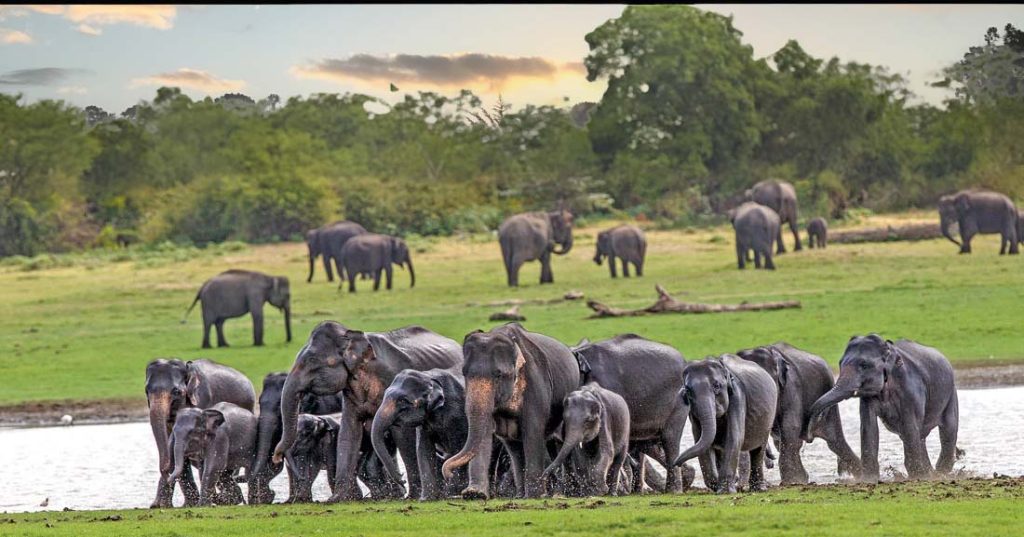
Udawalawe National Park, located in the southern part of Sri Lanka, is one of the country’s premier wildlife reserves, renowned for its large elephant population and diverse array of flora and fauna. Established in 1972, the park spans approximately 308 square kilometers (119 square miles) and was created to provide a sanctuary for wildlife displaced by the construction of the Udawalawe Reservoir on the Walawe River. The park’s diverse habitats, including grasslands, scrublands, and riverine forests, support a rich biodiversity.
One of the most notable features of Udawalawe National Park is its elephant population. The park is home to around 500 elephants, making it one of the best places in Sri Lanka to observe these majestic creatures in their natural habitat. Visitors to Udawalawe can often see herds of elephants, including calves, grazing in the open grasslands or bathing in the park’s water bodies. The park’s emphasis on elephant conservation is also highlighted by the presence of the Udawalawe Elephant Transit Home, a facility that cares for orphaned elephant calves before releasing them back into the wild.
In addition to elephants, Udawalawe National Park hosts a wide variety of other wildlife species. Mammals such as the Sri Lankan leopard, sambar deer, spotted deer, wild boar, water buffalo, and golden jackal can be found within the park’s boundaries. The park is also a haven for birdwatchers, with over 180 bird species recorded, including endemic species like the Sri Lanka grey hornbill and the Sri Lanka junglefowl. Reptiles, amphibians, and a diverse array of plant species further enhance the park’s ecological richness.
The Udawalawe Reservoir, located within the park, plays a crucial role in the local ecosystem. It provides a vital water source for the park’s wildlife, especially during the dry season, and supports a variety of aquatic species. The reservoir’s scenic beauty, with its backdrop of the distant mountains of the Central Highlands, adds to the park’s allure.
Safaris are the primary way to explore Udawalawe National Park, offering visitors the chance to experience the park’s wildlife up close. Guided jeep tours are available, providing knowledgeable insights into the park’s ecology and animal behavior. Early morning and late afternoon safaris are particularly popular, as these are the times when animals are most active.
Conservation and sustainable tourism are key priorities for Udawalawe National Park. Efforts are made to balance wildlife protection with tourism activities, ensuring that the natural environment is preserved for future generations. Visitor education programs and community involvement initiatives are part of the park’s strategy to promote conservation awareness and support local livelihoods.
In summary, Udawalawe National Park is a must-visit destination for wildlife enthusiasts and nature lovers. Its impressive elephant population, diverse wildlife, and stunning landscapes make it a highlight of Sri Lanka’s natural heritage. The park’s commitment to conservation and sustainable tourism ensures that its ecological treasures remain protected and appreciated for years to come.
